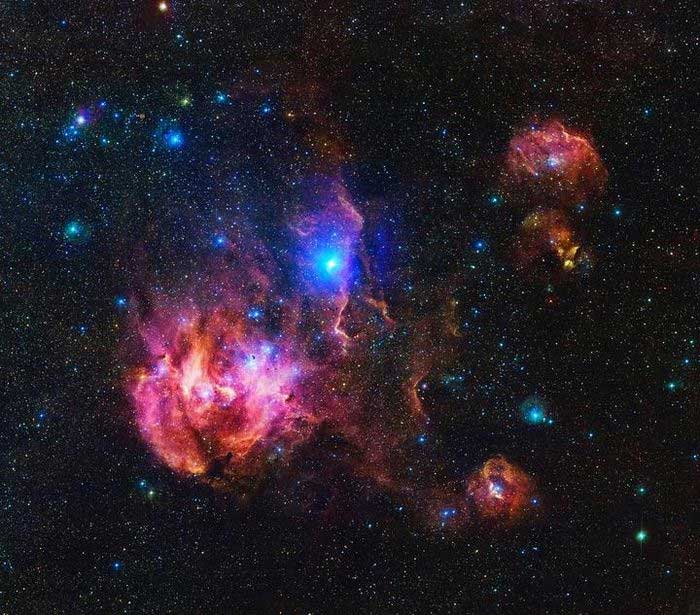A unique image recently captured by the Very Large Telescope of the European Southern Observatory in Chile depicts a nebula known as IC 2944, located approximately 6,500 light-years away from Earth. IC 2944 has a distinctive shape resembling a running chicken, leading astronomers to nickname it the “Running Chicken Nebula.”

A 1.5 billion pixel image reveals the Running Chicken Nebula in unprecedented detail. (Photo: European Southern Observatory)
This stunning image, captured by the Very Large Telescope at a resolution of up to 1.5 billion pixels, showcases the delicate strands of gas and dust in the nebula glowing in shades of red, pink, and orange, interspersed with bright blue stars. These new observations were made using a wide-field camera called OmegaCAM on the Very Large Telescope.
The Running Chicken Nebula spans approximately 71 light-years and is located in the constellation Centaurus, which contains several distinct regions. The bright area located at the “chicken’s rear” is known as IC 2948. This region is filled with luminous gas and molecular dust, all sprinkled with young, hot stars that exhibit a blue hue. It is also easy to spot this type of star scattered throughout the rest of the Running Chicken Nebula.
The brightest part is found in the upper section of the “flapping chicken wing”, which contains the sparkling star Lambda Centauri. At the upper right of the image, two emission nebulae contain super-hot ionized gas regions known as Gum 39 and Gum 40, forming the chicken’s head. Another emission nebula called Gum 41 can be observed at the lower right of the image, representing the chicken’s leg.
Additionally, there are countless orange, white, and blue stars, resembling fireworks in the sky, scattered throughout the nebula’s background.




















































